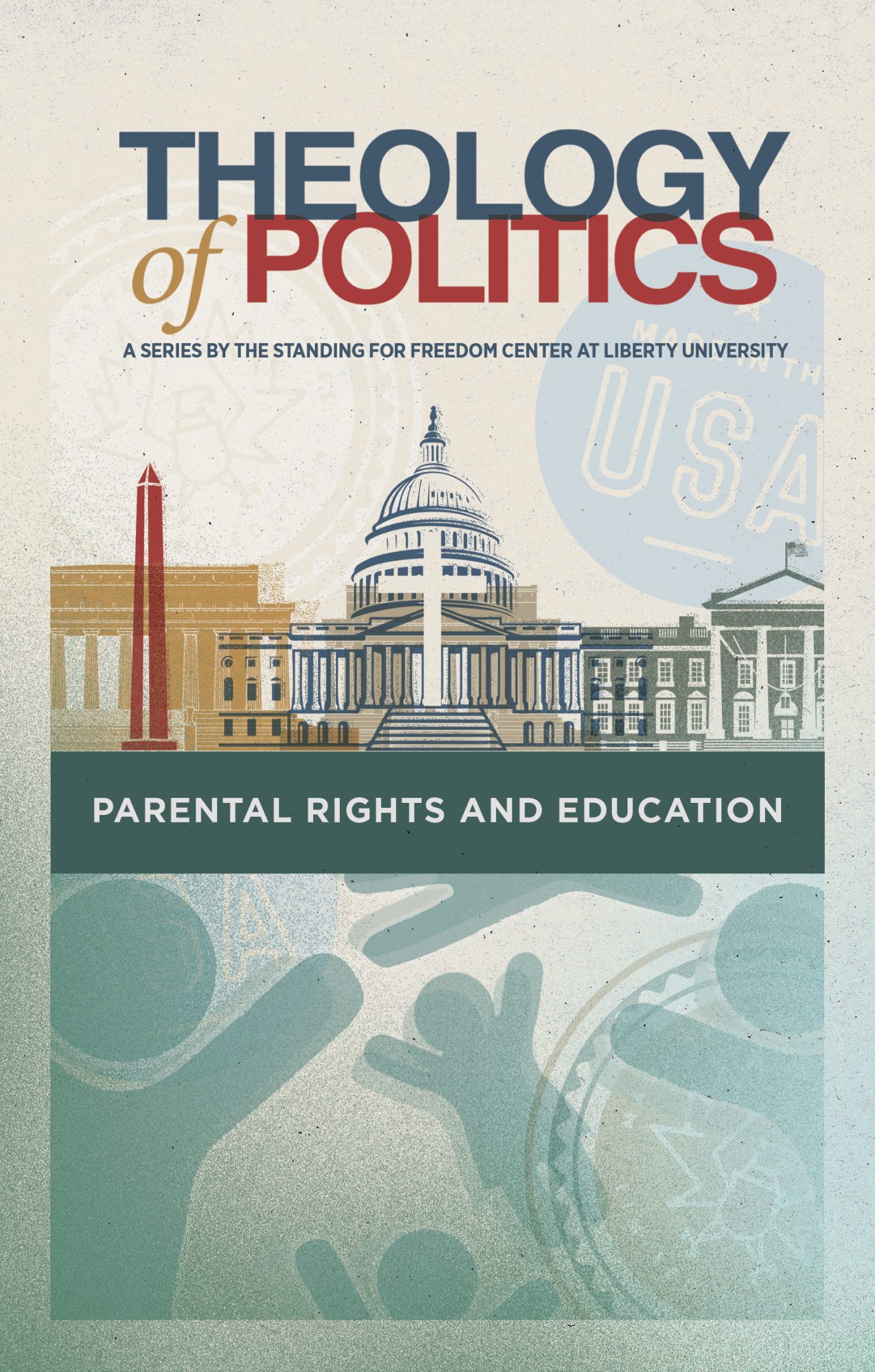


Get a free copy of Parental Rights & Education when you subscribe to our newsletter!

The trend of elevating flags that celebrate personal sexual and gender identities inappropriately places private matters on a national pedestal and detracts from the shared principles and collective history embodied by the American flag, ultimately weakening the bonds that hold the nation together.
The sanctity of our symbols is pivotal in the battle for our nation’s soul, with the American flag standing as the most significant. However, the U.S. Supreme Court’s decision in Texas v. Johnson (1989) marked a key moment in the free speech and patriotism debate. In a narrow 5-4 ruling, the court declared that burning the American flag as a political protest is protected under the First Amendment.
This case focused on Gregory Lee Johnson, who, in 1984, burned an American flag during a protest at the Republican National Convention in Dallas, Texas. Convicted in Texas for desecrating a revered object, Johnson’s appeal sparked a major debate about the limits of free expression and the meaning of patriotism.
Justice William J. Brennan Jr., writing for the majority, emphasized: “If there is a bedrock principle underlying the First Amendment, it is that the government may not prohibit the expression of an idea simply because society finds it offensive or disagreeable.”
Regardless of the controversy, this affirmation of free speech underscores our robust constitutional rights.
Recently, we’ve seen a different legal approach to symbols like the pride flag. Several individuals have been charged with felonies for vandalizing pride-themed logos and murals. In Spokane, Washington, three teenagers were charged with first-degree malicious mischief for using scooters to leave skid marks on a pride flag mural crosswalk. Seen as being motivated by “hate,” the incident could result in severe legal consequences, including imprisonment and significant fines.
Similarly, in Delray Beach, Florida, Dylan Brewer faces felony criminal mischief charges for performing burnouts on a pride-themed crosswalk, causing substantial damage. His actions, caught on surveillance, were deemed intentional and hate-motivated.
In St. Petersburg, Florida, a manhunt began for a driver who defaced a pride mural by doing “donuts” on it. This incident, among others in the area, led to calls for severe penalties under hate crime laws.
These cases starkly contrast how the legal system handles the desecration of various symbols. The protection of the pride flag, in contrast to the free speech rights concerning the desecration of the American flag, underscores a clear prioritization of certain ideals over others.
Flags have long been powerful symbols of national pride, unity, and values, representing both the places and emotions they evoke. They capture a nation’s identity and aspirations, reflecting its history and struggles. In recent years, flags representing sexual preferences and gender identities, as well as other political ideologies, have gained prominence in our culture. Or would it be better characterized as dominance?
In this article, I contend that the increasing legal protections and societal emphasis on identity-specific symbols, such as the pride flag, over the American flag signify a detrimental shift in cultural values that undermine national unity and cohesion, promote divisive identity politics, and inappropriately elevate personal sexual and gender identities to the forefront of public discourse.
The American flag, affectionately known as “Old Glory,” is a revered emblem of national identity and national pride. Its origins trace back to the American Revolution, when 13 colonies sought independence from British rule. A distinct national flag was necessary as the colonies endeavored to establish a new identity.
On June 14, 1777, the Second Continental Congress officially adopted the American flag. The original design, attributed to Francis Hopkinson, featured thirteen alternating red and white stripes representing the original colonies and a blue field with thirteen white stars symbolizing a new constellation. As more states joined the Union, the number of stars increased to the current 50, while the stripes remained at 13 to honor the original colonies.
Each element of the flag holds a significant meaning:
The American flag embodies the ideals of liberty, democracy, and the pursuit of a better future. It reminds us of the sacrifices made by those who fought for independence, and it continues to inspire patriotism and unity among Americans.
Before addressing the origins of the all-inclusive gay pride transgender flag, it is crucial to understand why nations and groups create flags in the first place. Flags serve several critical functions:
In stark contrast to national flags, which represent entire nations, the gay pride flag and the transgender pride flag symbolize specific communities within society. They represent the LGBTQIA+ community and are emblems of gay pride, rights, and special privileges.
Harvey Milk, one of the first openly gay elected officials in the United States, commissioned Gilbert Baker to create a flag that would represent “the diversity and unity” of the LGBTQIA+ community.
In 1978, Baker, a gay artist and activist, designed the flag out of rainbow colors, which is now well-known as a symbol of LGBTQIA+ pride and diversity.
The original rainbow flag had eight stripes, each color denoting a meaning:
Later, the flag was simplified to six colors, removing hot pink and combining turquoise and indigo into royal blue for practicality in mass production. According to its advocates, the flag’s spectrum symbolizes the what they view as the inclusion and diversity of the LGBTQIA+ community, promoting visibility and solidarity.
Monica Helms, a biological male who identified as a transgender woman, created the transgender pride flag in 1999. The flag consists of five horizontal stripes: two light blue, two pink, and one white in the center. Each color holds a meaning:
The design is intentionally symmetrical so that no matter how the flag is flown, it is always correct. This symbolizes finding correctness in one’s life and the journey toward self-acceptance.
The gay pride flag and the transgender pride flag are the most used and well-known pride flags and serve several purposes for the LGBTQIA+ community:
And yet they are not the only pride flags. In all, there are currently at least 32 pride flags, each representing distinct identities and groups, such as Transgenders, Queer People of Color, and Drag Queens, as well as specific sexual fetishes.
The latest entry into the collection — the inclusive LGBTQIA+ flag, also known as the intersex inclusive pride flag — was introduced in 2021 and encompasses all pride colors along with the transgender and queer stripes and the intersex circle.
For a comprehensive guide, Reader’s Digest provides an insightful article that explains each flag and its purpose in detail.
While the American flag has a clear and stable representation of national unity, sexual preferences and gender ideologies are individual aspects of one’s view of themselves.
This raises the question: Is it logical for these personal identifiers to have a flag akin to a national symbol?
A significant issue with the LGBTQIA+ flags is their lack of standardization. Since their inception, these flags have undergone numerous modifications, with new colors and symbols added to represent various subgroups and identities within the community. This continual addition is inconsistent with the fixed nature of national flags, which maintain their design to ensure unity and recognition.
Like the American flag, national flags remain constant to symbolize enduring principles and stability. In contrast, the ever-evolving LGBTQIA+ flags reflect internal divisions, the addition of new and changing identities, and the complexity of representing diverse identities within a single symbol. This inconsistency challenges the flags’ ability to provide a unified, lasting representation.
The concept of having a flag for sexual preferences raises essential questions about the public versus private aspects of identity. National flags represent collective histories, values, and identities that encompass more than private behaviors. Sexual preferences are private matters, and assigning public symbols like flags to them is unnecessary and excessive. Furthermore, elevating private sexual behaviors to the level of national identity is highly inappropriate, given their private nature.
Gender identity flags do not offer meaningful visibility or support. Instead, they create unnecessary fragmentation within society, dividing people into smaller, specialized groups rather than fostering unity. Unlike national flags that unite diverse populations under shared values and histories, gender identity flags contribute to societal division and undermine cohesive identity.
And yet, over the last several years, the White House, government agencies, military branches, embassies, schools, and other high-profile institutions have flown or otherwise celebrated LGBTQTIA+ pride flags and symbolism, diminishing the importance of the American flag and elevating one group of Americans over all others.
The controversy and divisiveness of flying public flags alongside private ones is actually starting to come to a head within local governments and public school districts. Many have opted to ban all flags on public flagpoles except officials ones, like the American flag, the state flag, the local flag, military flags, and the POW/MIA flag. Not surprisingly, many LGBTQ activists have taken it as a personal attack, with some even threatening decisionmakers with physical harm, recalls, and financial consequences.
Such decisions are on solid constitutional ground, however, as in 2021 the Supreme Court in Shurtleff v. City of Boston ruled that governments must remain ideologically neutral, meaning they can fly no personal or group flags or they must fly all of them (if requested).
The public’s growing weariness of LGBTQIA+ imagery in inappropriate public places is increasingly evident.
The backlash against flying pride flags at U.S. embassies worldwide highlights this sentiment. According to a 2023 Rasmussen Reports poll, 40 percent of Americans think that the display of LGBTQIA+ flags in public spaces and institutions is divisive. More than half (52 percent) of conservative respondents believe these flags create unnecessary division, while only 18 percent of liberal respondents share this view.
Additionally, it is crucial to address the concern of whether these flags are validating mental illness.
According to the American Psychiatric Association, gender dysphoria is a psychological distress condition that results from a discrepancy between a person’s perceived gender identity and his or her biological sex. Instead of promoting acceptance of this condition through flags and symbols, we should focus on compassionate, individualized mental health care.
From a biblical perspective, flags representing sexual preferences and gender ideologies unequivocally reject God’s created order. Scripture clearly outlines God’s design for humanity, where gender is defined as male and female, and marriage is established between one man and one woman in a covenant union for life.
Genesis 1:27 states, “So God created man in his own image, in the image of God he created him; male and female he created them.” Furthermore, Genesis 2:24 emphasizes the sanctity of marriage: “Therefore a man shall leave his father and his mother and hold fast to his wife, and they shall become one flesh.”
The 2021 all-inclusive pride flag, with its numerous and ever-changing colors and symbols, stands in stark contrast to the biblical ethic of sexuality and gender. It promotes an ideology that diverges from the Scriptural understanding of human identity and relationships, thereby challenging the foundational truths of the Christian faith.
The use of identity flags as national symbols is fundamentally flawed, contrasting with both societal and biblical principles. Prioritizing identity-specific symbols like the pride flag over the American flag is detrimental to American values.
Furthermore, elevating personal sexual and gender identities to such a prominent place in public discourse inappropriately places private matters on a national pedestal. Such practices detract from the shared principles and collective history embodied by the American flag, weakening the bonds that hold the nation together. The practice of elevating the importance of the pride flag must end immediately.
If you like this article and other content that helps you apply a biblical worldview to today’s politics and culture, consider making a donation here.
